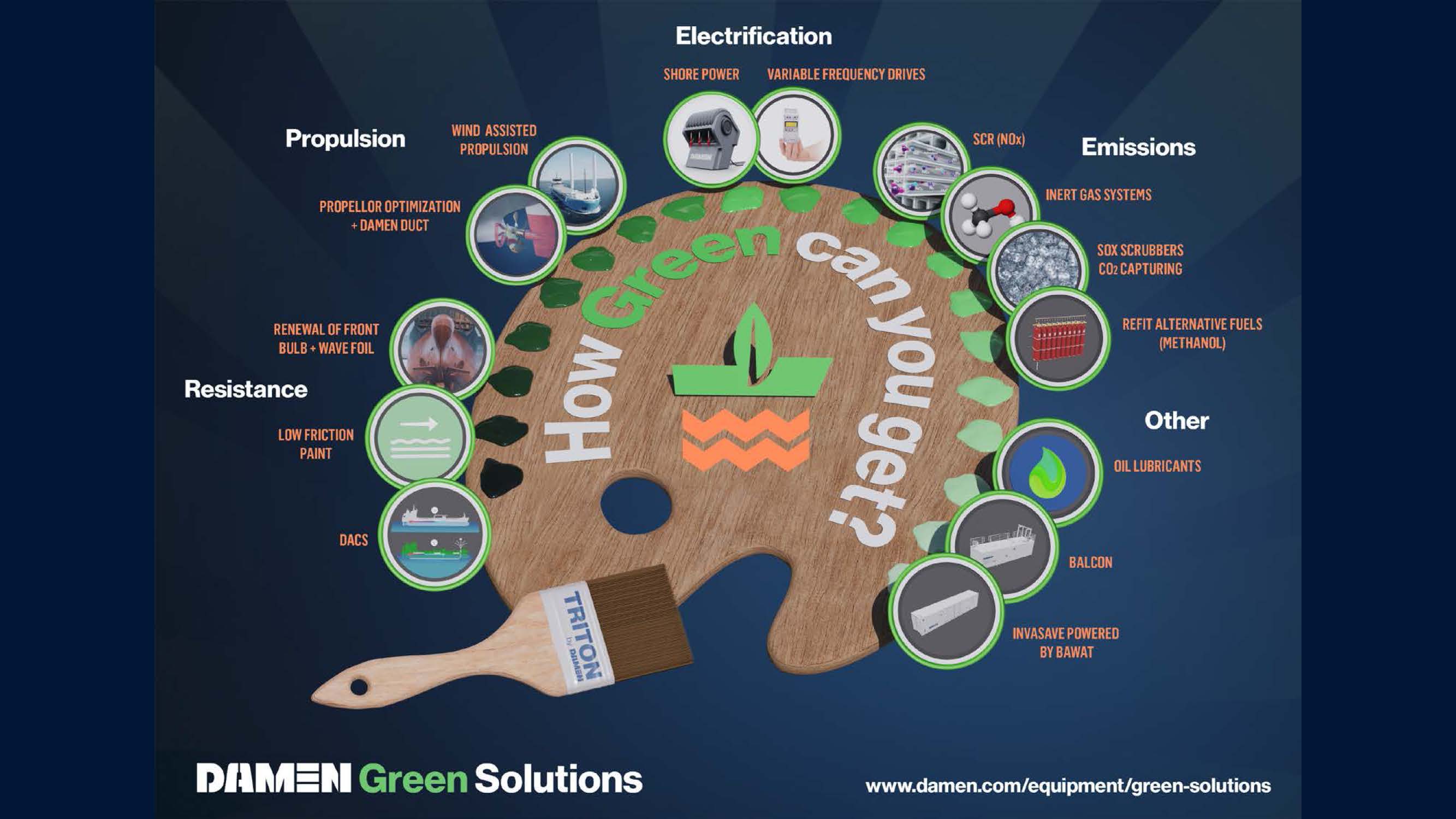Damen Air Cavity System

Damen Green DACS
Air
lubrication system for ships
Emission-free sailing is now more important than ever for seagoing vessels and inland shipping. With the introduction of the Carbon Intensity Indicator (CII), it is Damen’s responsibility to not only help you comply with these regulations, but also to benefit from impressive savings of fuel consumption of more than 10%. Our air lubrication system for vessels can even achieve a fuel reduction of up to 15%.
Damen’s air lubrication system for ships
The Damen Air Cavity System (DACS), our unique air lubrication system for vessels, originated from a cooperation between Damen and Delft University of Technology. Maintaining a thin layer of air over the flat bottom of a vessel’s hull, DACS achieves a significant reduction in water resistance, leading to increased efficiency and a reduction of fuel consumption and, therefore, emissions.
Compliant with CII and EU ETS tax reduction
The world is facing the consequences of climate change. The International Maritime Organization and the EU feel the responsibility to take action. Energy efficiency requirements, ratings and greenhouse gas taxes are the first measures that will be implemented in the short term. We understand this is a big concern for your operations. That’s why we want to provide the best possible solutions such as our air lubrication system for vessels.
Advantages of the Air lubrication system
- Fuel Saving up to 15%
- CII compliant
- Reduced EU ETS taxes
- Easy and quick Return On Investment
Savings of 7-12% --- Seagoing ships
Fuel savings realised by Damen’s air lubrication system for vessels (known as DACS) for seagoing ships is significant, achieving reductions in the region of 7-12 %. Customers also benefit from the equivalent decrease in emissions – a win-win.
Savings up to 15% --- Inland waterway vessels
Inland waterway ships have a large flat bottom and they sail at relatively low speeds, often in shallow water. Damen’s air lubrication system for ships can achieve very impressive fuel consumption reductions for inland barges. The fuel savings and equivalent emission reduction are between 8-15%.